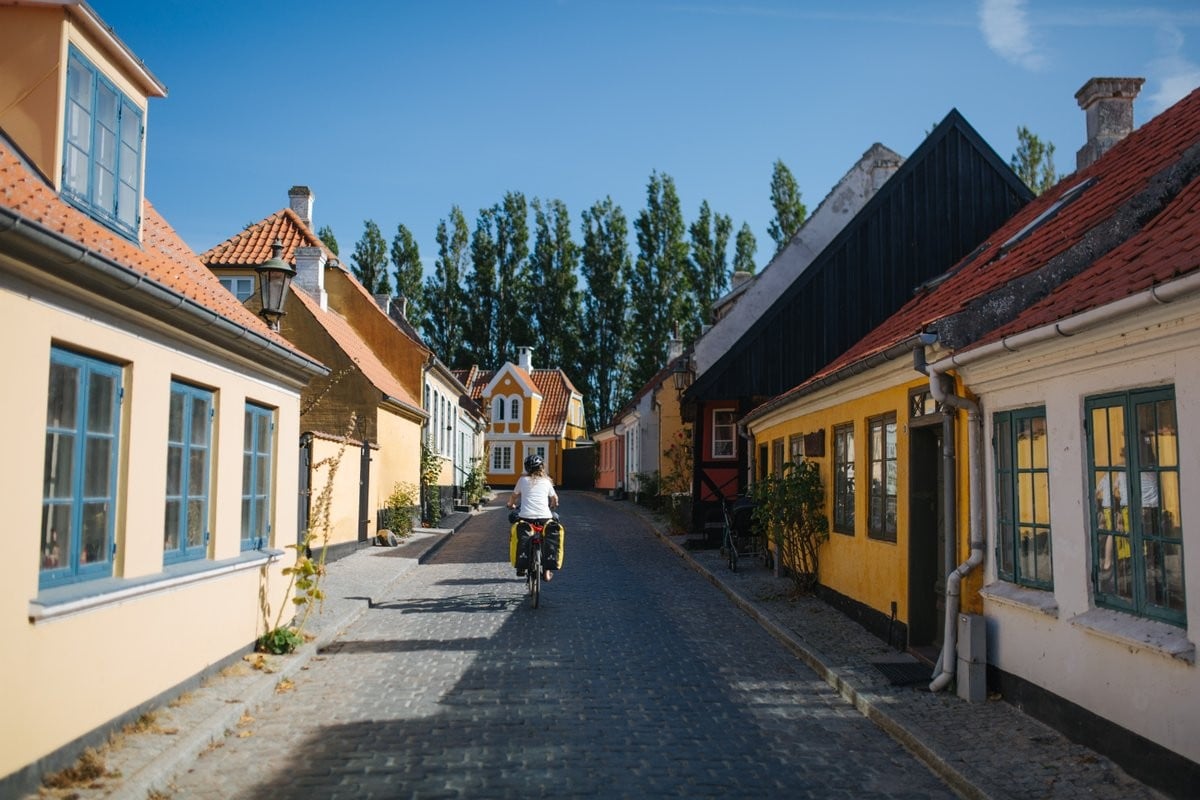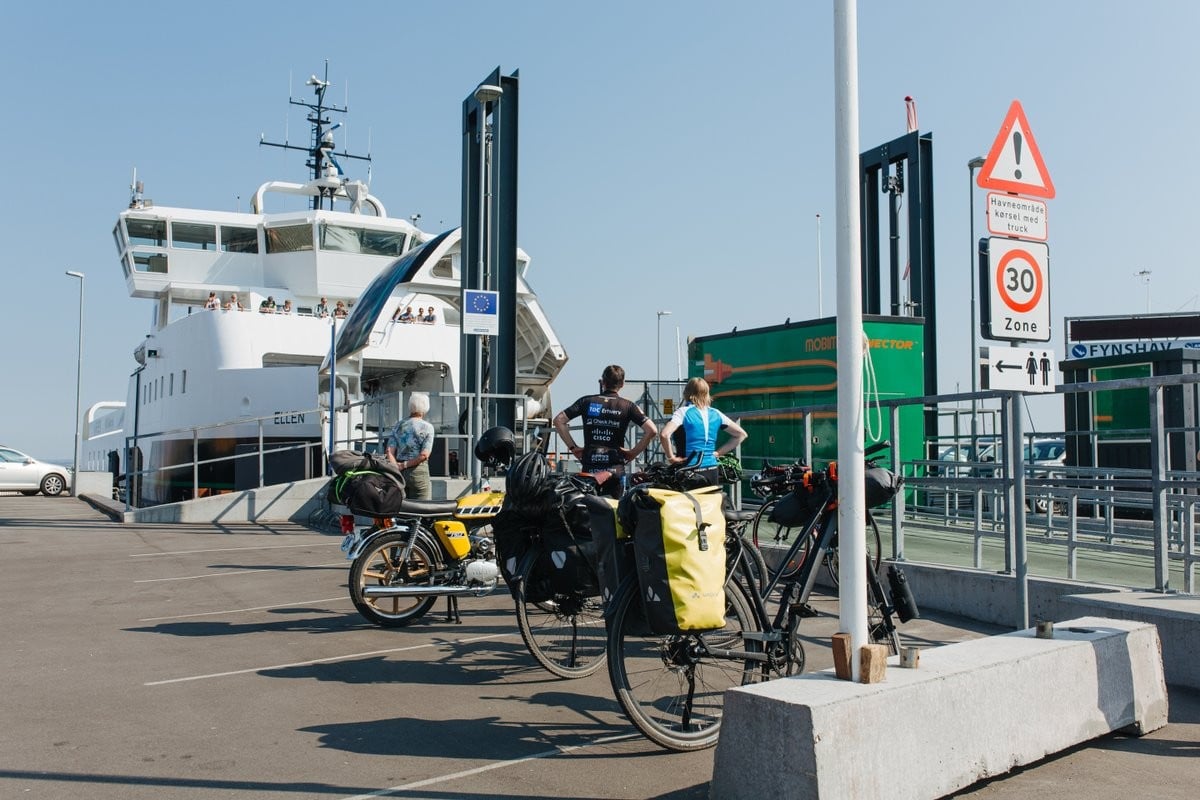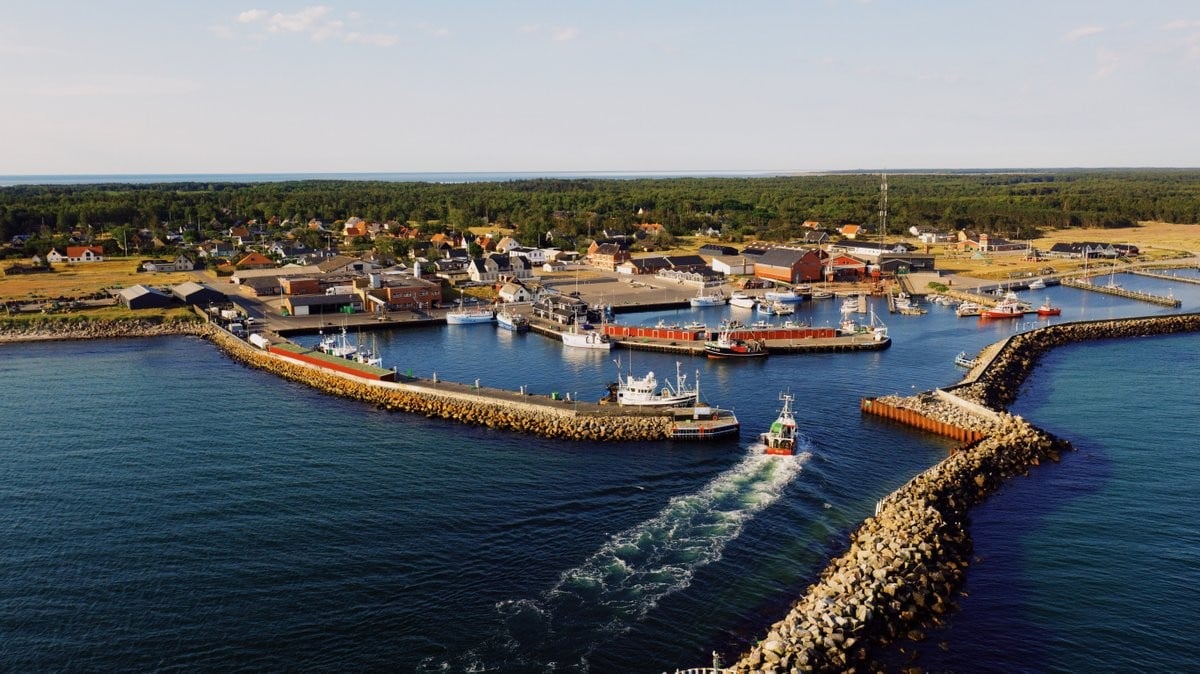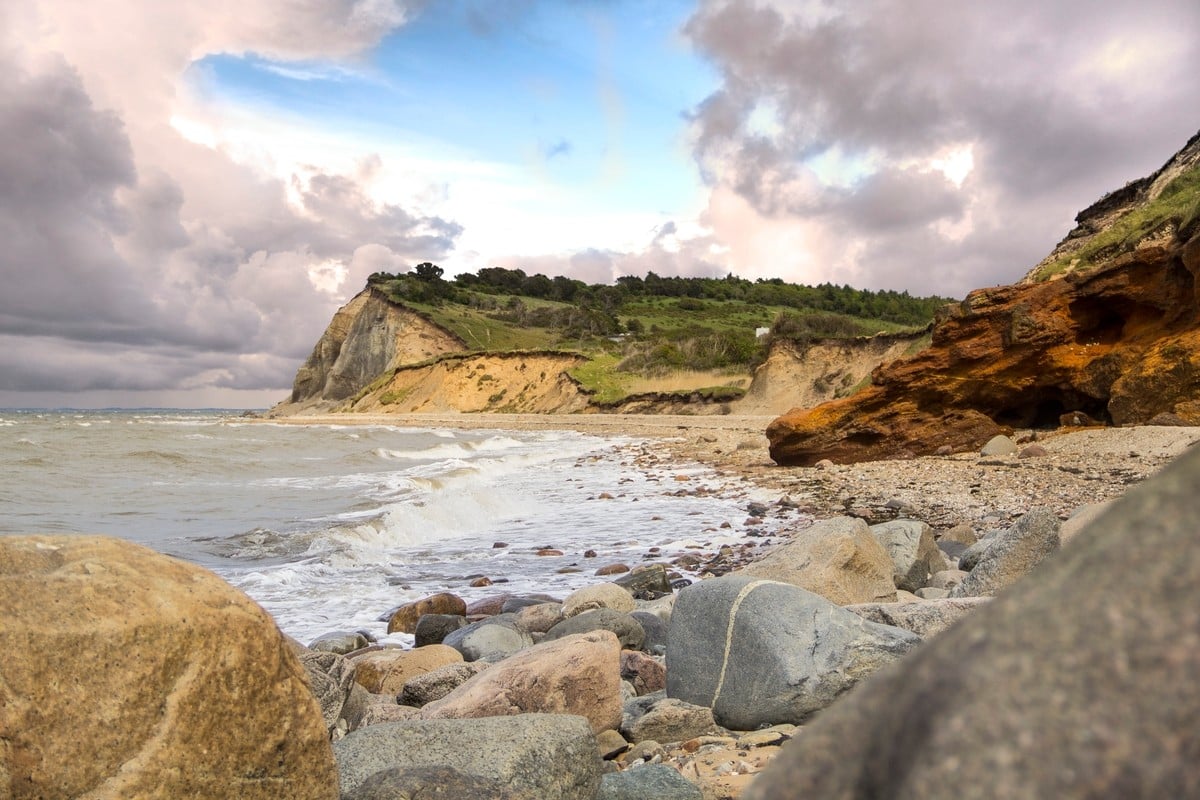Five small islands in Denmark you must visit this summer

One of the most charming things to do in Denmark in the summer is to go off the beaten track and take a ferry to one of the smaller islands.
Ærø
Ærø, (pronounced ‘air-rue’) is an island off the coast of Southern Denmark, located in the lower part of the South Funen Archipelago.
Known for its brightly painted houses and rich maritime history, the island boasts crystal clear water, and supposedly enjoys sunnier weather than the rest of Denmark. Ærø island is a romantic destination, with almost 5,000 couples a year travelling there to get married each year.
Take a bike ride up to Søby, where you can climb up Skjoldnæs Lighthouse and look over the shore, for a modest fee of 20 kroner. After that, you can walk down to Dronningens Hule (Queen’s Cavern), where the body of the daughter of an ancient King of Lyø, another island in the Funen archipelago lies.
After that, we suggest you bike to the local bakery, Finn’s Bageri, where you can find 75-year-old Finn Torben Nissen's traditional sourdough bread and sweet treats, and watch the locals in his cosy café.

Cobblestone streets and colourful houses in Ærøskøbing. Photo: Michael Fiukowski and Sarah Moritz/VisitDenmark
How to get there: Take the ferry from Svendborg to Ærø, or buy a bus ticket to Ærøskøbing.
Must-see: The two beach spits on Ærø; Eriks Hale (or Æros Hale) in Marstal and Vesterstrand in Ærøskøbing. Both have breathtaking coastline views and are a traditional spots for family days out.
Eat and drink: For 50 years, Restaurant Mumm has been the go-to spot for organic, locally-sourced food.

People with bikes on cycling vacation, waiting for the ferry to go island hopping. Photo: Michael Fiukowski and Sarah Moritz/VisitDenmark
Læsø
Læsø, known for its salt spa, and museums with seaweed roofs, is located off the northeast coast of Denmark. With a population of just over 1,890 inhabitants on 101 km² of land, Læsø belongs to the Danish 'desert belt', an area where there is sometimes so little rain that streams and ponds partly dry up.
If you have a free weekend, we suggest you go down to Læsø Kur, a health centre just opened in the former Vesterø Harbour Church. Spend a day in their saline groundwater spa. If you have psoriasis, it serves as a great treatment, but also great if you just want to relax.
If you’d rather explore the shores of Læsø, we suggest going to Krogbækgaard. There, you can ride Icelandic horses on the beach, or if you’d rather, in the quiet forests. After, you can walk down to Antik&Retro, and have a light lunch outside, on the patio.
How to get there: Take the ferry from Frederikshavn in northern Jutland, or take a 45-minute flight from Roskilde Airport on the Copenhagen Air Taxi.
Must see: Holtemmen beach - one of Læsø's hidden gems.
Eat and drink: Storhaven’s ice cream shop.
 Læsø harbour. Photo: LABAN Stories/VisitDenmark
Læsø harbour. Photo: LABAN Stories/VisitDenmark
Askø-Lilleø
The twin islands of Askø and Lilleø, connected by a causeway, are two of Denmark's smaller inhabited islands. Known for fruit farming, Lilleø is renowned for its apple orchards, especially those of the omnipresent chef-entrepreneur Claus Meyer, who uses them in his distilled spirits and beer.
A great time to go is during the spring, when all the fruit trees are in bloom, and the Apple Flower Festival is held. There are many booths which sell produce of the season, such as apples, plums and honey - what’s more, if you love to fish, you can find fresh sea trout and garfish from May to June.
You can walk, bike or kayak around the island - we suggest you go to Askø museum, where you can read about the islands' rich history. Right around the corner from the museum, Askø Church, built around the 15th and 16th centuries, and is dedicated to the patron saint of sailors, St. Nicholas.
In the church you can find a beautiful altarpiece, designed as a three-winged cabinet with carved figures.
How to get there: catch the ferry from Bandholm, a small town in Northern Lolland.
Must see: Mette Holmskov’s art gallery (Askø Strandvig 177)
Eat and drink: Askø Mejeri Restaurant
Tunø
Tunø is a car-free island in Kattegat, about 4 km west of the neighbouring island of Samsø.
Its main attraction is the Tunø church, also functioning as a lighthouse, built in the 14th century - we recommend you climb to the top to see the entire island.
On a sunny afternoon, you could also bike down to Frilandsblomster’s pick-your-own flower fields, and collect a colourful bouquet. Right around the corner is Tunø Røgeri, a restaurant famous for its smoked dishes, and Mejeriet Tunø, with its delicious seafood.
How to get there: take the ferry from Hou, south of Aarhus, or from Aarhus itself.
Must see: Check out their local music festival, which has been around since 1987.
Eat and drink: Tunø Udsigten has a beautiful outside beer garden

Because Tunø is car-free, children can roam around safely. Photo: VisitOdder
Fur
Fur is an island in the Limfjord, located just north of Salling peninsula. Labelled Denmark’s most beautiful island, people go there to try their craft beer, go fossil hunting, and see some of the 20 galleries and workshops the island has to offer.
After you step off the ferry, you can rent a bike, and either ride the blue coastal route around Fur, the green hill route directly to the top of Fur, or the red shop route which leads you to the shops, galleries and exhibitions.
Fur is well-known for its magnificent cliffs, and to make the most of it, we suggest you walk along the western coast of the island, until you reach the first of the cliffs, Lille Knudshoved. If you keep walking you will come across Store Knudshoved and the Knudeklinterne, with rainbow-coloured rocks in places.
Take the ferry from Branden, on the south coast of the Limfjord in northern Jutland.
Must see: The diatomite cliffs. On the list of candidates to become a World Heritage site, the cliffs are made up of diatomitic sediment approximately 60 metres thick, containing 180 layers of volcanic ash.
Eat and drink: Fur Bryghus, is a popular bar with live music.

The famous cliffs of Fur. Photo: Destination Limfjorden
Comments
See Also
Ærø
Ærø, (pronounced ‘air-rue’) is an island off the coast of Southern Denmark, located in the lower part of the South Funen Archipelago.
Known for its brightly painted houses and rich maritime history, the island boasts crystal clear water, and supposedly enjoys sunnier weather than the rest of Denmark. Ærø island is a romantic destination, with almost 5,000 couples a year travelling there to get married each year.
Take a bike ride up to Søby, where you can climb up Skjoldnæs Lighthouse and look over the shore, for a modest fee of 20 kroner. After that, you can walk down to Dronningens Hule (Queen’s Cavern), where the body of the daughter of an ancient King of Lyø, another island in the Funen archipelago lies.
After that, we suggest you bike to the local bakery, Finn’s Bageri, where you can find 75-year-old Finn Torben Nissen's traditional sourdough bread and sweet treats, and watch the locals in his cosy café.

How to get there: Take the ferry from Svendborg to Ærø, or buy a bus ticket to Ærøskøbing.
Must-see: The two beach spits on Ærø; Eriks Hale (or Æros Hale) in Marstal and Vesterstrand in Ærøskøbing. Both have breathtaking coastline views and are a traditional spots for family days out.
Eat and drink: For 50 years, Restaurant Mumm has been the go-to spot for organic, locally-sourced food.

Læsø
Læsø, known for its salt spa, and museums with seaweed roofs, is located off the northeast coast of Denmark. With a population of just over 1,890 inhabitants on 101 km² of land, Læsø belongs to the Danish 'desert belt', an area where there is sometimes so little rain that streams and ponds partly dry up.
If you have a free weekend, we suggest you go down to Læsø Kur, a health centre just opened in the former Vesterø Harbour Church. Spend a day in their saline groundwater spa. If you have psoriasis, it serves as a great treatment, but also great if you just want to relax.
If you’d rather explore the shores of Læsø, we suggest going to Krogbækgaard. There, you can ride Icelandic horses on the beach, or if you’d rather, in the quiet forests. After, you can walk down to Antik&Retro, and have a light lunch outside, on the patio.
How to get there: Take the ferry from Frederikshavn in northern Jutland, or take a 45-minute flight from Roskilde Airport on the Copenhagen Air Taxi.
Must see: Holtemmen beach - one of Læsø's hidden gems.
Eat and drink: Storhaven’s ice cream shop.

Askø-Lilleø
The twin islands of Askø and Lilleø, connected by a causeway, are two of Denmark's smaller inhabited islands. Known for fruit farming, Lilleø is renowned for its apple orchards, especially those of the omnipresent chef-entrepreneur Claus Meyer, who uses them in his distilled spirits and beer.
A great time to go is during the spring, when all the fruit trees are in bloom, and the Apple Flower Festival is held. There are many booths which sell produce of the season, such as apples, plums and honey - what’s more, if you love to fish, you can find fresh sea trout and garfish from May to June.
You can walk, bike or kayak around the island - we suggest you go to Askø museum, where you can read about the islands' rich history. Right around the corner from the museum, Askø Church, built around the 15th and 16th centuries, and is dedicated to the patron saint of sailors, St. Nicholas.
In the church you can find a beautiful altarpiece, designed as a three-winged cabinet with carved figures.
How to get there: catch the ferry from Bandholm, a small town in Northern Lolland.
Must see: Mette Holmskov’s art gallery (Askø Strandvig 177)
Eat and drink: Askø Mejeri Restaurant
Tunø
Tunø is a car-free island in Kattegat, about 4 km west of the neighbouring island of Samsø.
Its main attraction is the Tunø church, also functioning as a lighthouse, built in the 14th century - we recommend you climb to the top to see the entire island.
On a sunny afternoon, you could also bike down to Frilandsblomster’s pick-your-own flower fields, and collect a colourful bouquet. Right around the corner is Tunø Røgeri, a restaurant famous for its smoked dishes, and Mejeriet Tunø, with its delicious seafood.
How to get there: take the ferry from Hou, south of Aarhus, or from Aarhus itself.
Must see: Check out their local music festival, which has been around since 1987.
Eat and drink: Tunø Udsigten has a beautiful outside beer garden

Fur
Fur is an island in the Limfjord, located just north of Salling peninsula. Labelled Denmark’s most beautiful island, people go there to try their craft beer, go fossil hunting, and see some of the 20 galleries and workshops the island has to offer.
After you step off the ferry, you can rent a bike, and either ride the blue coastal route around Fur, the green hill route directly to the top of Fur, or the red shop route which leads you to the shops, galleries and exhibitions.
Fur is well-known for its magnificent cliffs, and to make the most of it, we suggest you walk along the western coast of the island, until you reach the first of the cliffs, Lille Knudshoved. If you keep walking you will come across Store Knudshoved and the Knudeklinterne, with rainbow-coloured rocks in places.
Take the ferry from Branden, on the south coast of the Limfjord in northern Jutland.
Must see: The diatomite cliffs. On the list of candidates to become a World Heritage site, the cliffs are made up of diatomitic sediment approximately 60 metres thick, containing 180 layers of volcanic ash.
Eat and drink: Fur Bryghus, is a popular bar with live music.

Join the conversation in our comments section below. Share your own views and experience and if you have a question or suggestion for our journalists then email us at [email protected].
Please keep comments civil, constructive and on topic – and make sure to read our terms of use before getting involved.
Please log in here to leave a comment.